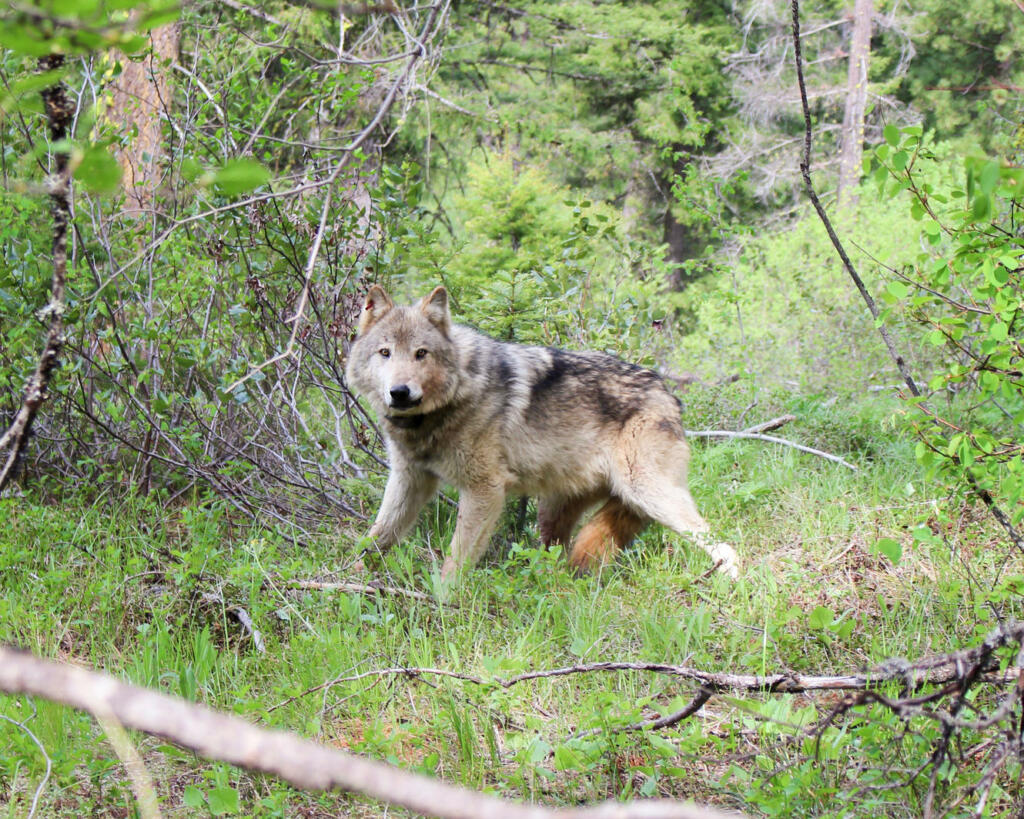When wolf biologist Trent Roussin first saw the gray wolf on May 26 in the Sheep Creek area of Washington’s Stevens County, it wasn’t immediately apparent that she had been shot. The wolf was lying on the ground miles behind a locked gate; it was quiet, Roussin says, and not particularly messy or bloody. When he and his colleagues realized she had been poached, he wasn’t surprised. But he was disappointed.
“It’s really a bummer, is the first thing you think,” says Roussin, who works at the Washington Department of Fish and Wildlife. State-endangered gray wolves, once extirpated from the area, started recovering in Washington in 2008. Apex predators like wolves help keep forest populations of deer and small predators like coyotes in check. But with increasing overlaps between ranching and wolf territory, many people in Eastern Washington see the wolves as headaches at best and threats to life and business at worst.
“We can definitely live with wolves, but we think right now we have an oversaturation of them,” says Scott Nielsen, president of the Stevens County Cattlemen’s Association. “They’re not dispersing as fast as we would like.”
At least seven wolf packs attacked livestock in 2020. Washington saw at least 12 wolf poachings between 2010 and 2018, with the latest known incident in May 2019 in Stevens County. As of April, the Washington Department of Fish and Wildlife estimates that there are at least 178 wolves spread across 29 packs in the state, the majority of which are in Eastern Washington; that’s up from an estimated 145 wolves across 26 packs in 2019.



